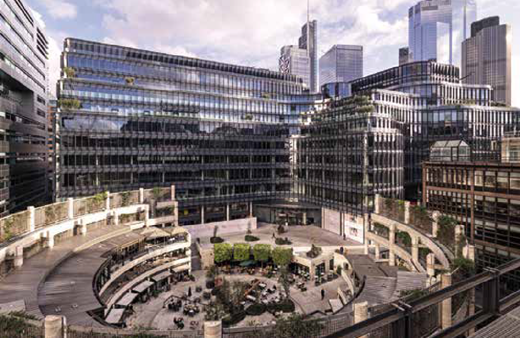Changes inevitable as social impact moves up the agenda
Hartelt published the following article in the May magazine of Real Asset Insight.
The industry is in prime position to move to conviction- based socially responsible investing – without compromisingon returns. Nicol Dynes reports
There has been a significant mindshift on impact investing within real estate. Events in the last year have contributed to the change of attitude, as more investors have taken socially responsible investment on board and seen its impact on communities and society.
“Investors still look for performance, but now they want performance with purpose,” says Nehla Krir, head of sustainability and CSR at BNP Paribas. “It is regulations-driven, but also conviction-based. We, as investment managers, need to push and combine all these elements, delivering performance as well as impact.”
Impact investing suits real estate because buildings by their nature are rooted in the community and meant to be useful for people. “It has shot up to the forefront of investors’ consideration,” says Martin Zdravkov, head of
UK residential and impact investing at Lasalle Investment Management. “During the pandemic there’s been a focus on not just evaluating problems, but also contributing solutions, without sacrificing returns.”
“I believe there has been real change in the industry,” confirms Michel van Oostvoorn, director, investments, at Hartelt Fund Management. “Investors in our funds really want that combination of social impact and financial returns and they believe it’s possible.”
‘Real estate is the ultimate impact asset class, because it’s a store of value and provides shelter to people.’ – Michel van Oostvoorn, Hartelt Fund Management
The idea that impact investing means sacrificing returns is an “outdated thought”, he suggests: “We strongly believe that social returns drive financial returns. Over the long term, impact investing strategies outperform.”
In the healthcare sector in the Netherlands, for example, it has been shown that high satisfaction rates of residents and workers drive occupancy rates, which in turn drive financial returns as well.
“Investors are searching for volume and yield, but they also want to align their strategies with prevailing trends,” says Ron van Bloois, chair of the Senior Housing & Healthcare Association. “That’s why they are taking the social element into consideration more and more, to create a value chain between them and the user.”
SOCIAL OBJECTIVES
Intentionality is key, because the whole strategy needs to be built around the social objectives to be reached. “Impact investing gives extra purpose and goes well beyond just incorporating ESG into the strategy, good as that is,” says Abigail Dean, global head of strategic insights at Nuveen. “You cannot retrofit an impact investing strategy. It’s a transformative investment, not just a positive one.”
Impact investing suits every real estate sector. “Real estate is the ultimate impact asset class, because it’s a store of value and provides shelter to people,” says Van Oostvoorn. “It provides long-term risk-adjusted returns, but it must be a long-term commitment. Exit is critical: you can’t flip an affordable housing project after five years.”
There has been a focus on residential, such as affordable housing or healthcare, but impact investing can be adapted to other asset classes, he adds. “It can be broadened to all sectors of real estate, for people work in buildings and buildings are in the community.”
Impact investing “can fit office or logistics as well as resi and it can fit into every strategy”, says BNP Paribas’s Krir.
MULTI-FACETED APPROACH
It is multi-faceted and encompasses many different aspects. “Job creation, renewable energy, infrastructure, green spaces, electric vehicles, these are all impact investing,” adds Dean. “It works across all real estate sectors, but you need to specify the impact for each asset class.”
‘It is regulations-driven, but also conviction- based. We, as investment managers, need to push and combine all these elements, delivering performance as well as impact’ – Nehla Krir, BNP Paribas
While it is conviction-based, it is also a form of future-proofing investments, ensuring they are resilient. “Social impact is more difficult to measure than the environmental impact,” says van Bloois. “Valuation of the S is still tricky, and it’s still not clear whether we’ll see it in rental levels or on the yield side.” Measuring the impact is the crucial but difficult next step, he adds. “The data don’t exist yet. We’re just starting to gather the information and correlation with value.”
Some benchmarking will be needed and indicators that enable meaningful comparisons between companies and competitors. “Measuring the E in ESG used to be hard, but now it’s much easier,” says LIM’s Zdravkov. “The next stage is measuring the S, because in order to manage it and to make a positive contribution to society you need to measure it first.”
It’s only a matter of time, he believes: “In five or 10 years we’ll have as clear a frame of reference for the S as we now have for the E.”







